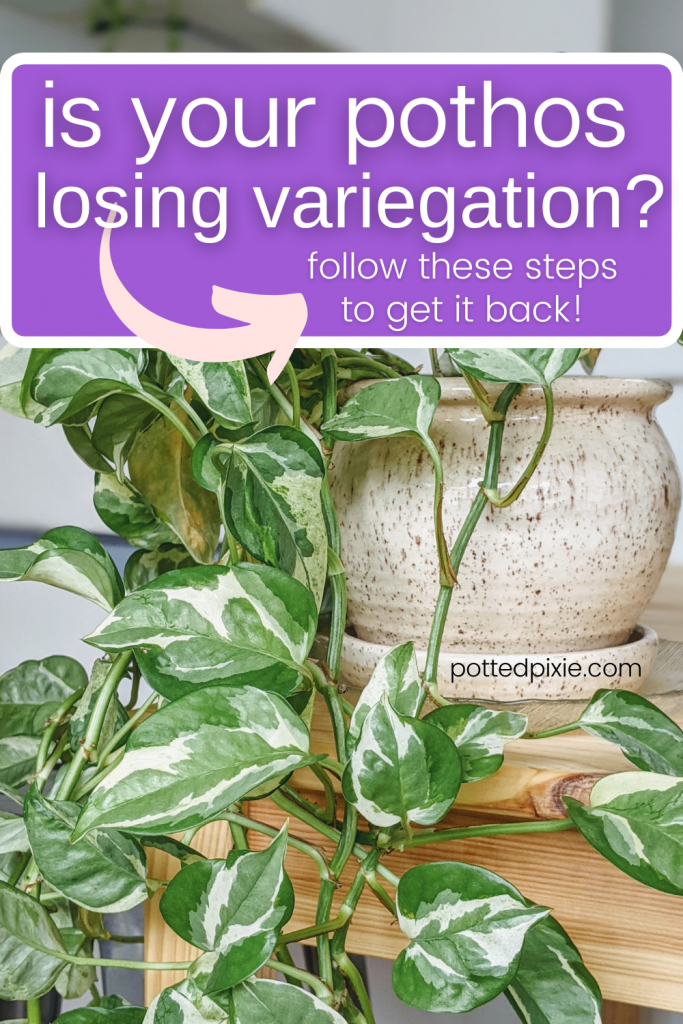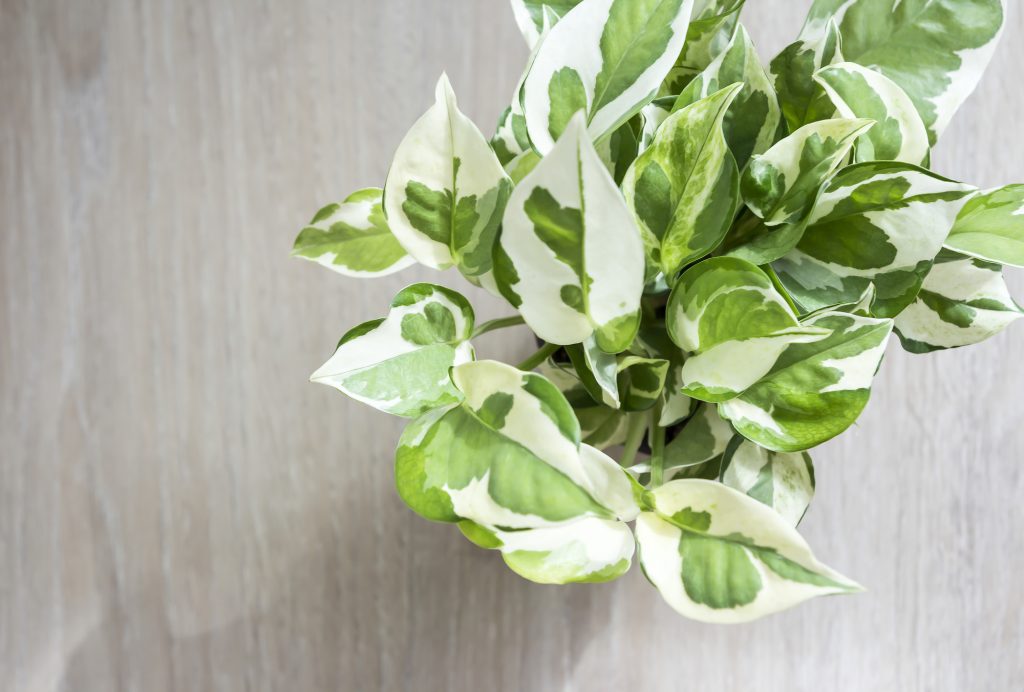Variegated pothos are becoming a very popular houseplant because of the dramatic color patterns and their easy to care for schedule. Each leaf is unique and beautiful making it an exciting plant to watch grow.
Caring for a variegated pothos is roughly the same as regular pothos, with a little extra attention paid to how much light it’s getting regular pruning when signs of reverting back to green are showing.
Let’s dive into everything you need to know about caring for a variegated pothos, also called the epipremnum aureum.
This post contains affiliate links, which means I may make a small commission if you click through and make a purchase.
How to Care for a Variegated Pothos Plant
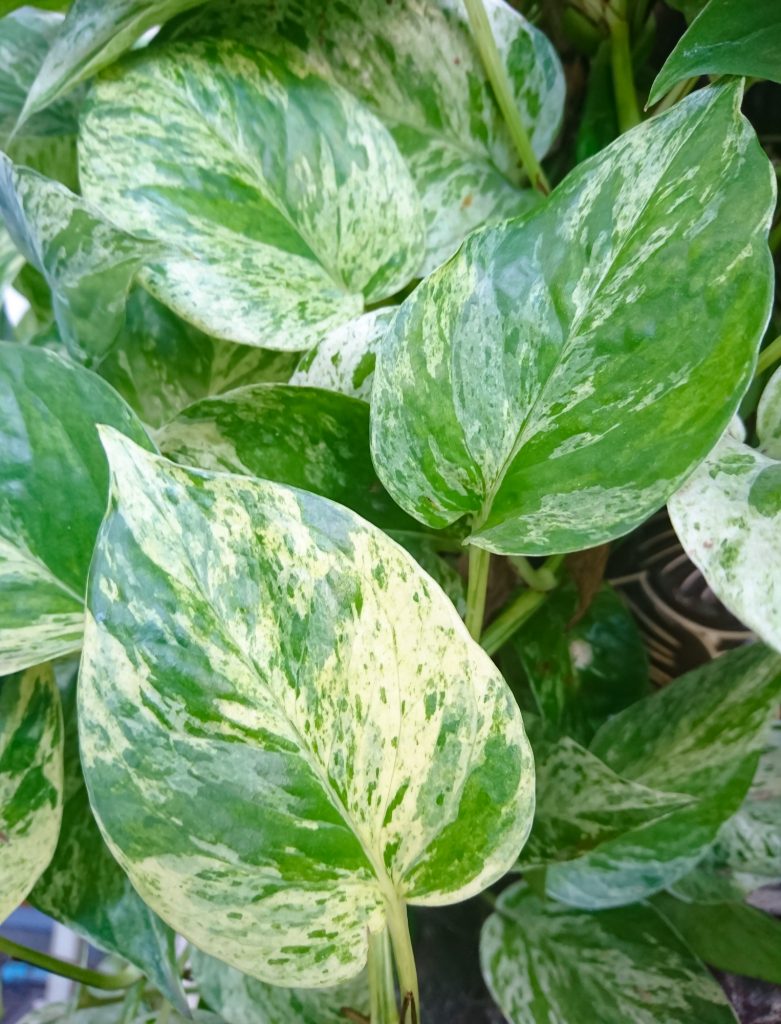
How Much Light Does a Variegated Pothos Need?
They need a sunny, but filtered location. This could mean a south or west facing window with a sheer curtain or opaque window film.
Certain types of variegated pothos can handle more sunlight than others. Neon pothos and Golden pothos, for example, will do well with brighter locations.
Others with lots of white variegation, such as Marble Queen, will need bright light but nothing too harsh.
The white leaves are much more weak and delicate than the green leaves and are more susceptible to burn.
Water & Humidity
Water your pothos when the leaves start to look droopy. These plants can be easily overwatered. They don’t like to sit in soggy soil.
Depending on the amount of light it’s getting, this might be around once a week (or even less).
A good rule of thumb is to stick your finger in the soil, if it’s dry about 2 inches down, it could probably use some water.
While they don’t need a whole lot of humidity, variegated pothos plants will generally do better in a humid environment.
Soil
Since pothos plants do not like sitting in moist soil and prefer to be watered only when almost dry, you’ll need a well-draining soil mix.
Find a high quality potting soil and mix in some perlite and coco coir to give it the drainage it needs.
What Makes Pothos Variegated?
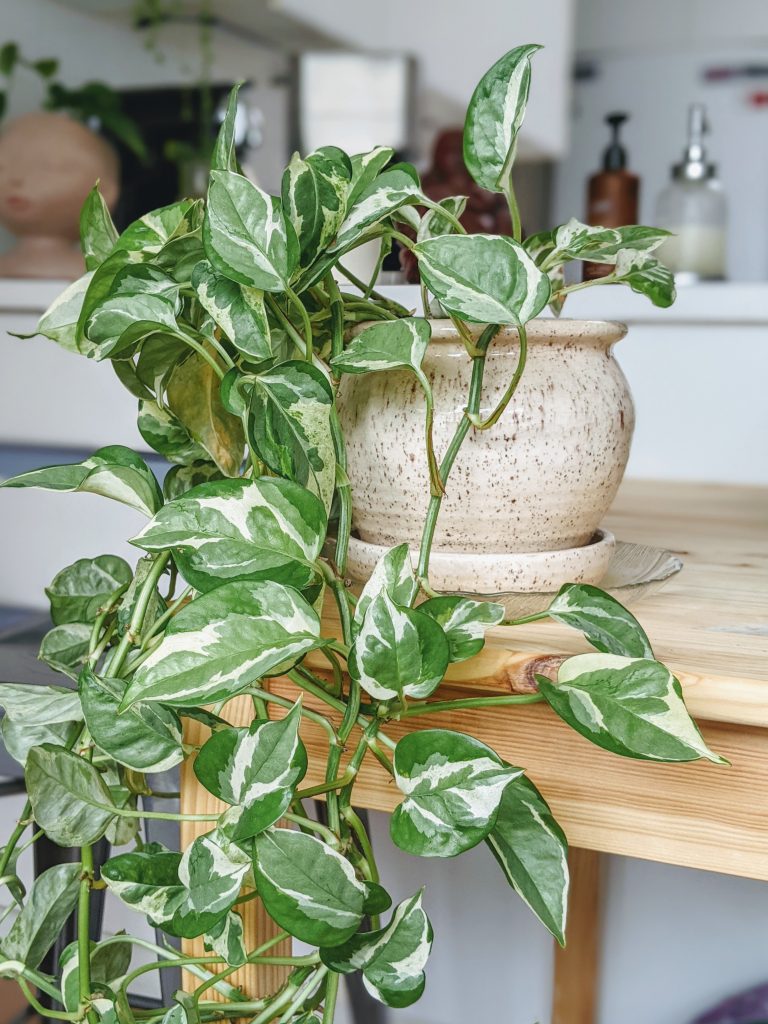
Variegation on a plant means that it’s lacking the chlorophyll pigment. The green part on a leaf is full of chlorophyll which allows the plant to soak up sunlight and convert it to energy.
Variegation on a pothos (or most plants) is actually a genetic mutation, some even call it a ‘deformity.’
What happens on variegated pothos is that there are two cells competing – one has pigment (green) and one doesn’t (white).
We call this chimeric variegation, which is mostly unstable and unpredictable. As in, we don’t know which type of variegation (or not) will come with each new leaf.
In my opinion, this is what makes owning variegated plants fun! Examples of chimeric variegation are found on plants like the Marble Queen and Golden Pothos Varieties.
There is also another form known as blister variegation. This is found on varieties such as the Scindapsus Pictus (satin pothos). It’s almost an optical illusion.
There is a layer of air between the green pigmented lead and the non-pigmented leaf, which makes it appear to have shiny, silver spots or patches.
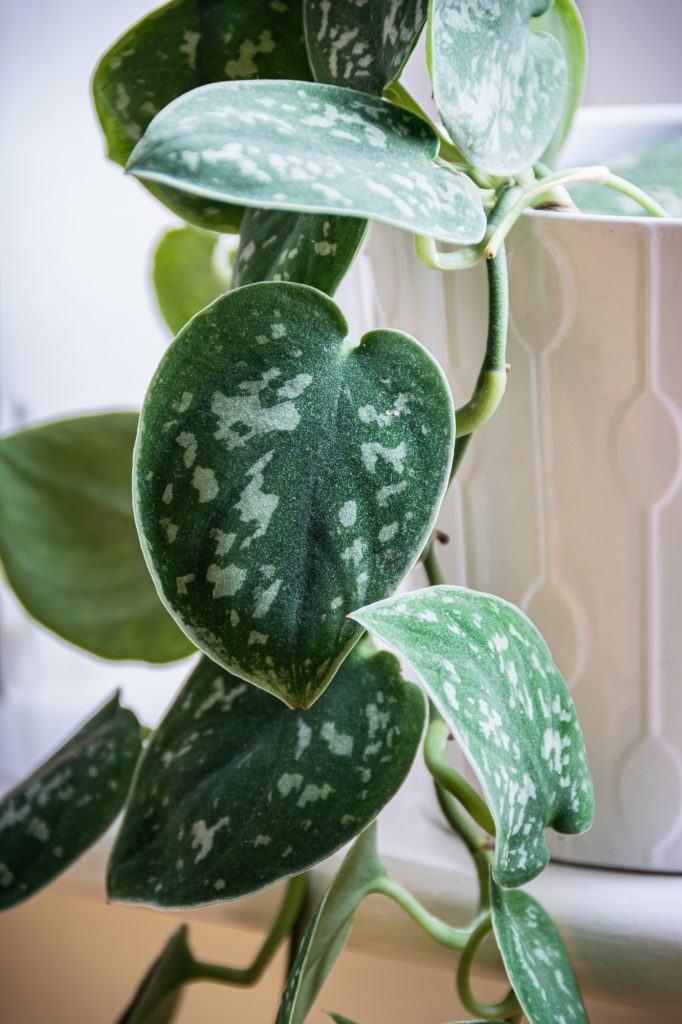
Do variegated pothos grow slower?
The growth rate of variegated pothos depends on light levels and how much variegation is on the plant.
In general, variegated plants grow slower than non-variegated ones because they don’t contain as much chlorophyll.
However, most variegated plants grow faster when they have access to more sunlight. You still need to stay away from hot, direct sun.
Additionally, leaves that have more white (the variegated part) than green, won’t be able to photosynthesize as fast.
Since there is no chlorophyll in the white parts of the leaves, the plant can’t feed itself from here, thus slower growing.
Like variegated plants? You will love the variegated rubber plant
Why is my Pothos Losing Variegation?
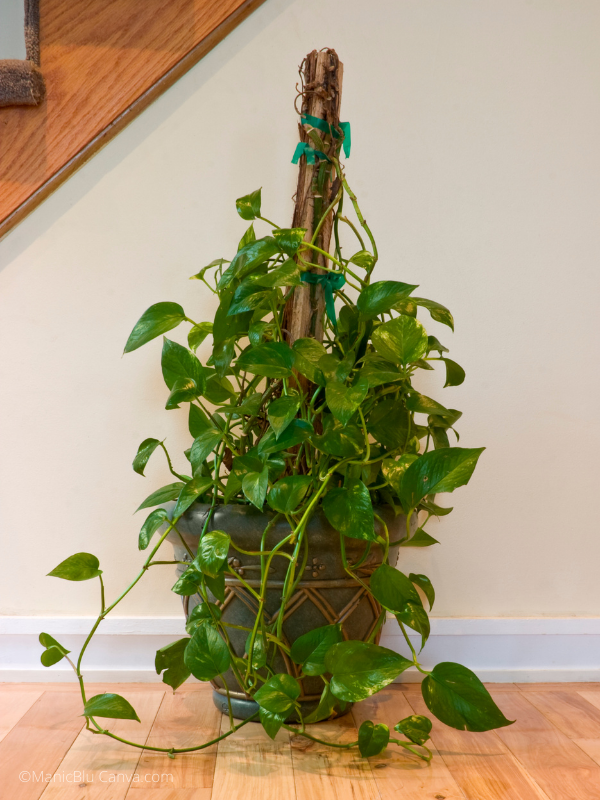
Sometimes your pothos will push out leaves that are completely green with no variegation.
This is because your plant has started to realize that the leaves with the most green actually produce the most energy.
Not enough light will cause your pothos to lose variegation and revert back.
If your plant is generally unhealthy and just ‘hanging on,’ it will also do whatever it needs to try and survive.
This means it will try to produce more green-dominant leaves in an effort to photosynthesize.
Also, if your plant is located in a spot in your home that is very hot or very cold, it will also stop producing variegated leaves.
This is because it’s trying to stay alive in these extreme conditions and the most efficient way to do that is by producing all green leaves.
How do I get More Variegation in Pothos?
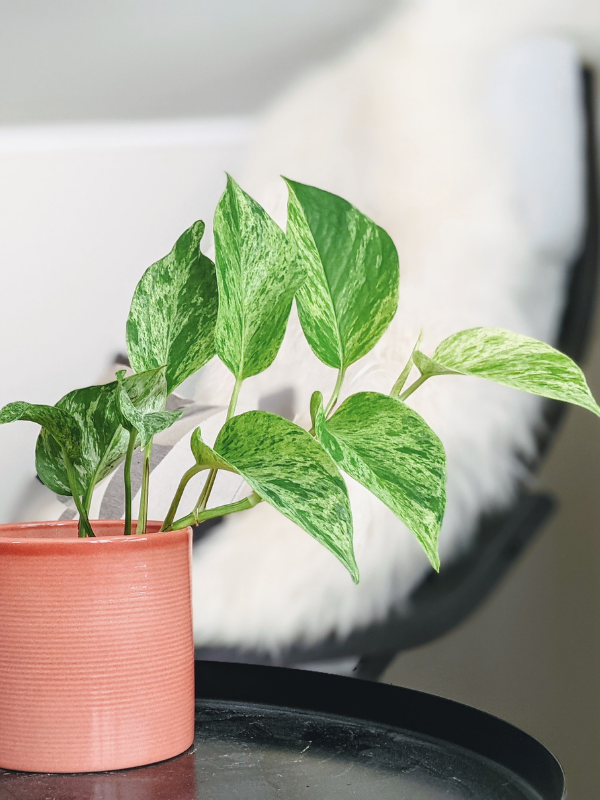
You can increase the amount of variegation on your pothos by increasing the amount of sunlight it gets. If you do this, make sure you gradually introduce more light.
Too much sun will burn the leaves. A Golden Pothos, for example, can exhibit entirely yellow leaves if given optimal sunlight conditions.
Another thing you can do is propagate a few variegated stems and attempt to grow an entirely new plant.
By choosing to propagate variegated-dominate stems with nodes, you have a higher chance of ensuring the new plant produces mostly variegated leaves.
Can You Regain Lost Variegation?
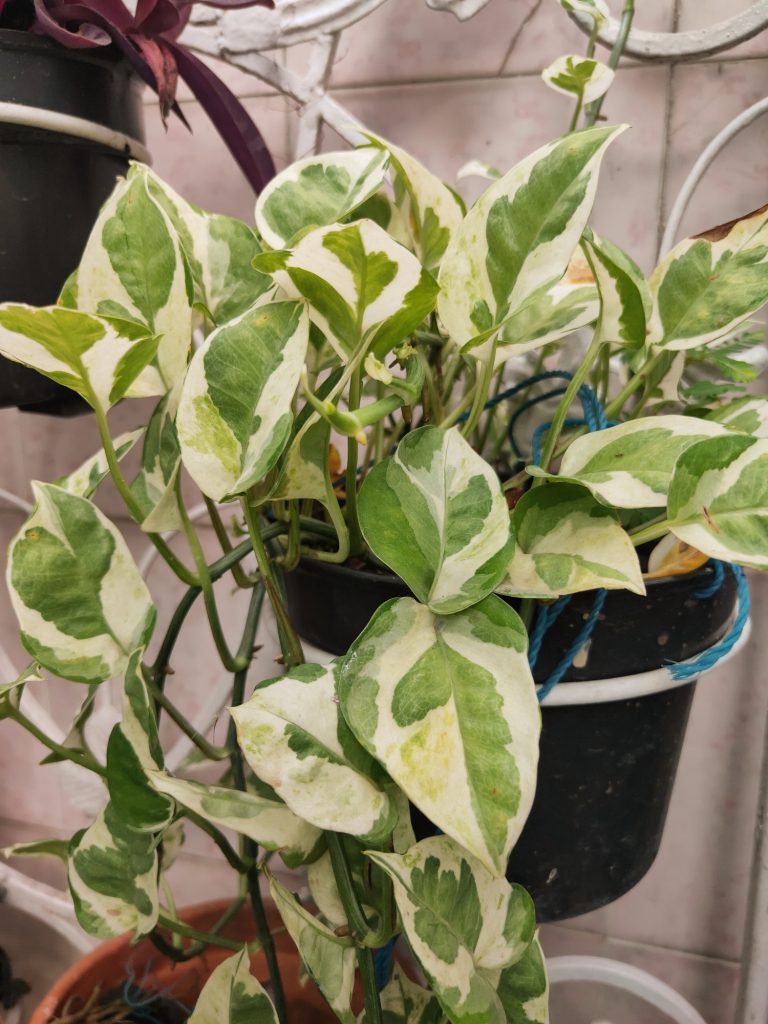
You can attempt to regain lost variegation by moving your pothos into a brighter area and pruning off stems that are mostly green, or have little variegation.
This way, there is less competition for the green leaves to take over and it may encourage your plant to continue producing variegated leaves.
Take the green leaf that you want to remove, and follow it all the way back to the soil until you see where it started producing variegated leaves. This is where you want to prune.
Keeping your plant healthy in the correct sized pot (with drainage holes), occasional fertilizer and ensuring it gets the correct amount of water will also help ensure your plant is healthy enough to continue producing variegated leaves.
Variegated Pothos with Brown Spots or Yellow Leaves
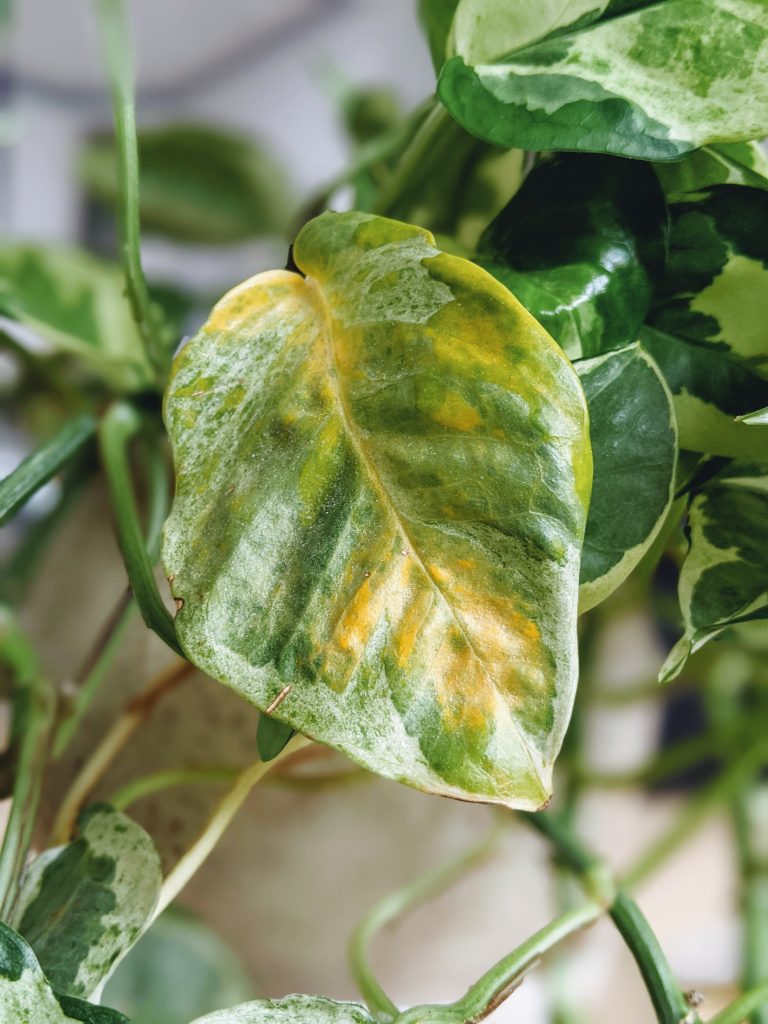
An overwatered variegated pothos will produce yellow leaves which feel very limp.
Prune off all yellow leaves and allow the soil to completely dry out before the next watering.
If left in too wet of soil for too long, your pothos will start to rot, which is when fungus gnats arrive.
Learn how to get rid of fungus gnats here (using natural remedies).
If you’re noticing brown edges or crispy leaves on your pothos, this is usually caused by too much sun. Remember that bright, filtered light is the best light for this variety of plant.
Drafty areas of your house can also cause crispy leaves to form. Try moving your plant to a sunnier location or an area without any drafts.
Remember, when moving a plant around your home, allow it time to adjust. Most plants do not like to be moved very often, so they may go into slight ‘shock.’
Give them time to acclimate to its new spot before moving it again.
Read more about this and other indoor plant care fail-proof tips in my guide here.
Variegated Pothos Varieties
There are dozens of types of pothos including many variegated varieties. Here are the most common types of variegated pothos and how to identify them.
Marble Queen Pothos – Variegation is a mix, both light and dark green and white, it’s also inconsistent. These ones are also more likely to have that picturesque split down the middle of the leaf, where one side is green and the other is variegated.
N’Joy – the variegation is more solid and chunky looking instead of wispy. Usually the white is found on the outside of the leaf with green in the middle.
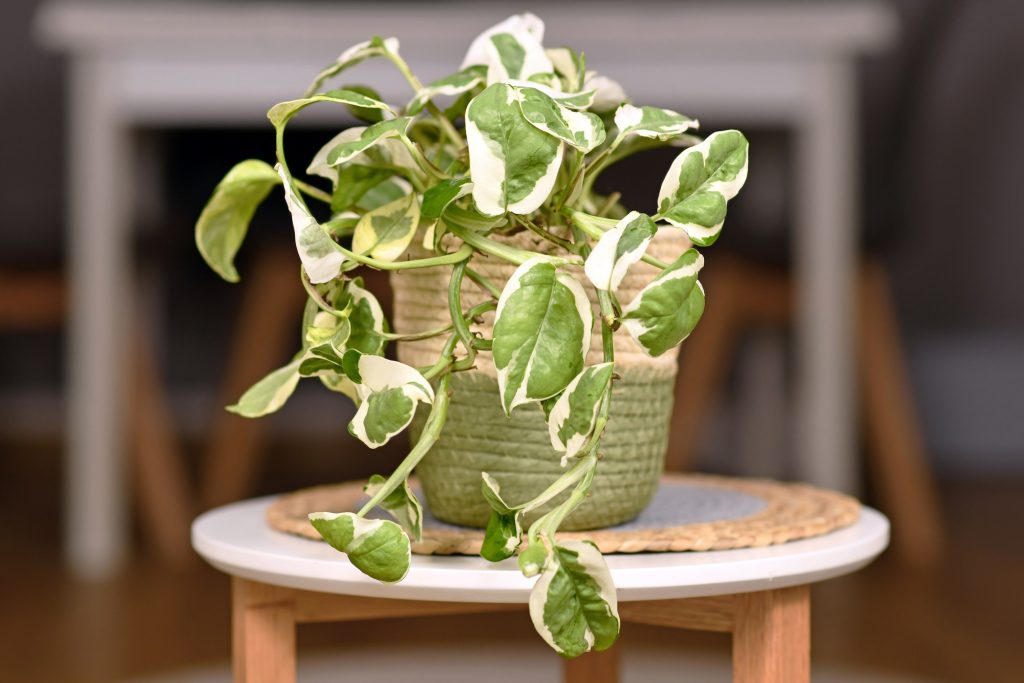
Pearls and Jade – this is a hybrid between the n’joy and the marble queen pothos! So you will see similar characteristics of each plant in this pothos variety.
Snow Queen – looks very similar to the Marble Queen but the white variegation is much more pronounced.
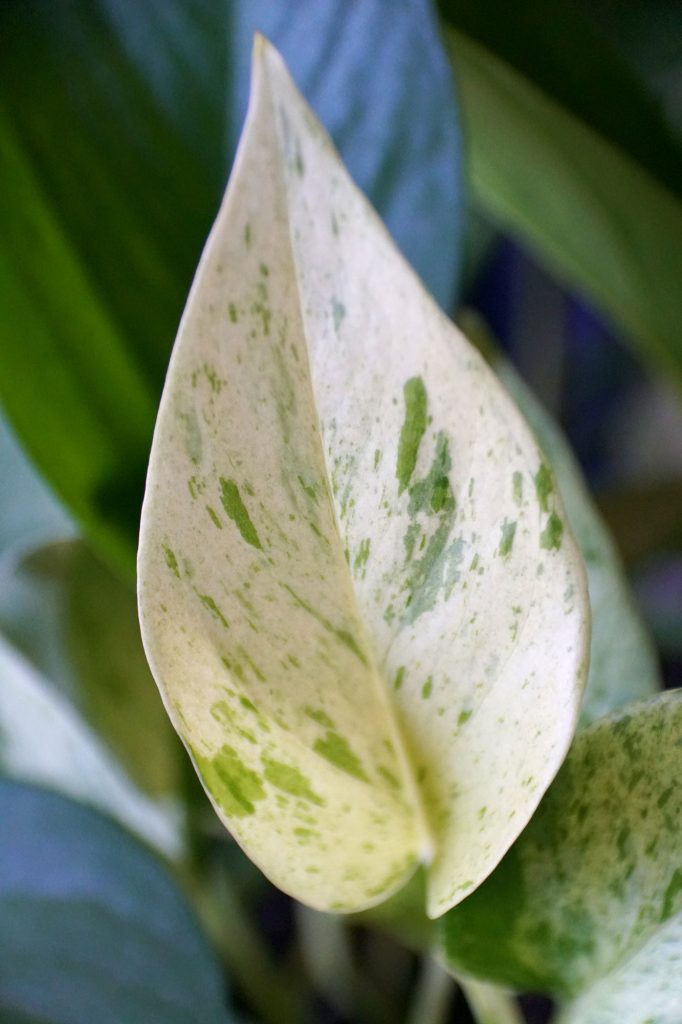
Golden Pothos – identified by deep green leaves with wisps of yellow or golden color throughout. They can even achieve white variegation as well!
Variegated Neon Pothos – brighter lime green colored leaves plus darker green variegated stripes.
Manjula Pothos – looks very similar to the Marble Queen but the leaves are more round and wide. The variegation also follows the grain of the leaf.
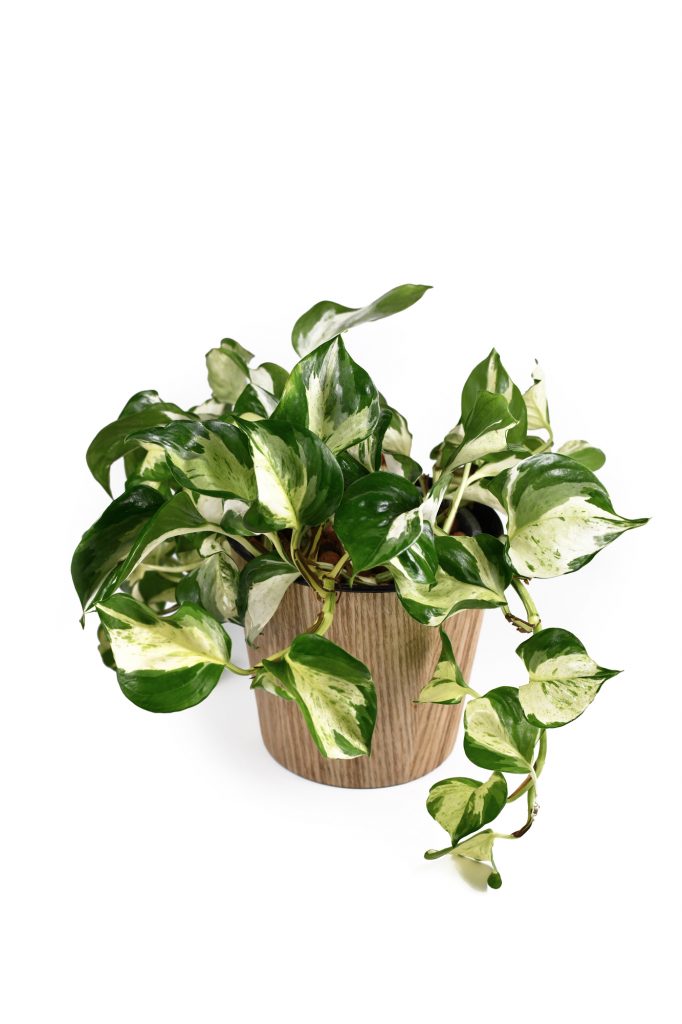
Satin Pothos – also known as scindapsus pictus. Wide, heart shaped leaves with silvery splashes on top.
Harlequin Pothos – lots of solid white and dark green color blocks, almost looks like a White Calathea Fusion but in pothos style.
Stay Green!
Save a pin below to your Pinterest boards!
